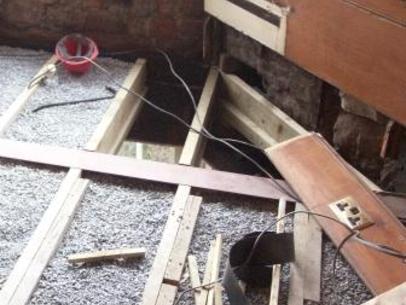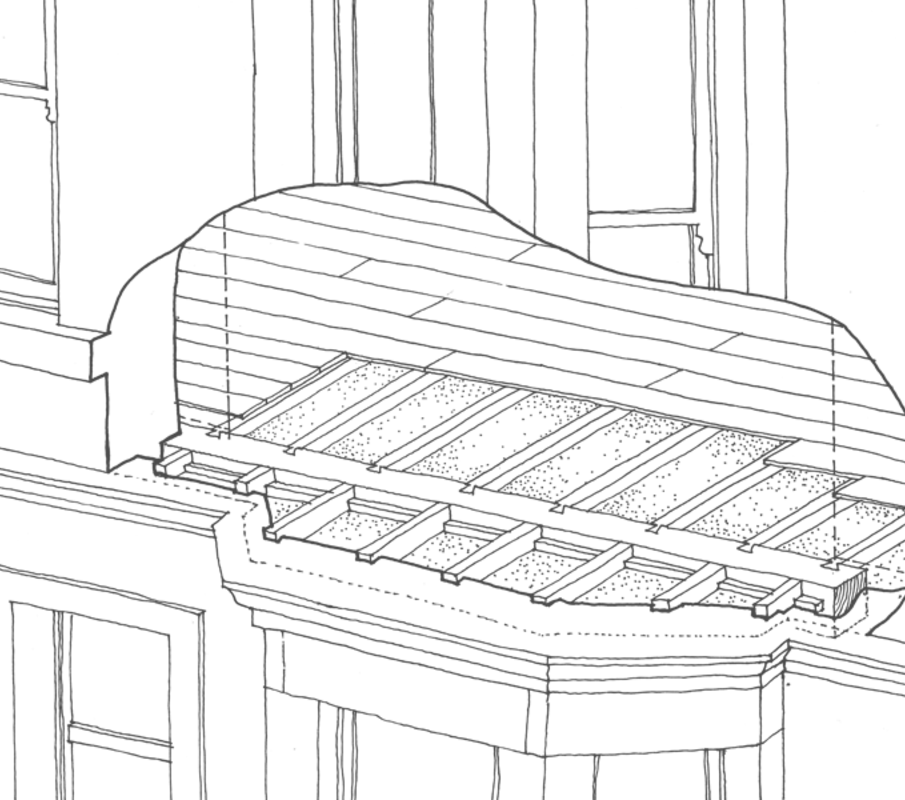Bressumer and other large beams
Beams span large gaps and carry the weight of floors and walls above them. The ends rest on walls. They are part of the structure of your building. Often found above a shop front and in bay and oriel windows. If the beam is made of timber, the ends can rot if the wall is damp. Many timber beams have been replaced with steel. These are normally urgent common repairs.
Large beams may be called 'bressumers'. As beams support the structure above, it is important to make sure the wall above is kept dry. Deal with repairs as a matter of urgency.
Beams are found:
- above shop fronts, supporting the front wall
- inside shops, supporting internal walls
- in bay and oriel windows, where they carry the floor joists from the main part of the room on one side and the floor of the bay on the other
Problems
You may see a crack in the wall supported by the beam. This may be caused by:
- rot in the ends of timber beams, caused by damp in the wall
- timber bressumer beams resting on narrow cast iron columns may bend and deform as the load is not well spread along the beam
Solutions
- take structural engineers' advice, and get a survey and report
- remove the cause of dampness immediately
- replace with new steel or timber beams
- local repairs using resin may be possible
- strengthen deformed bressumer beams by bolting steel plates to either side of the timber beam (called flitching)

Professional help recommended?
You should always seek professional advice if your building needs this kind of work.
Who pays?
Repairs to bressumer and other large beams are normally common repairs.
